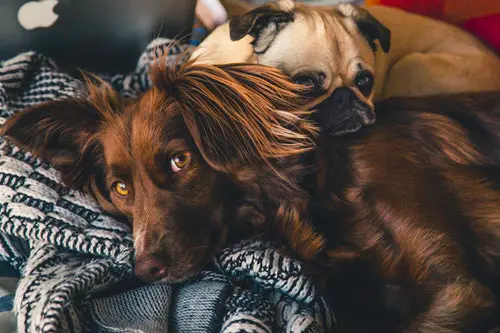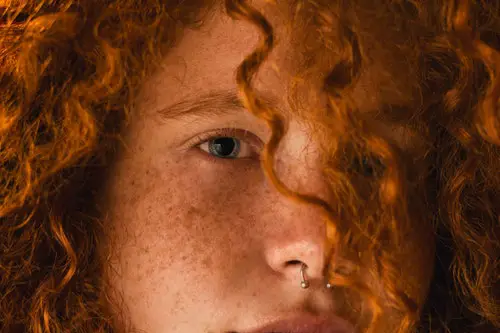Hair is a thread-like outgrowth found in the dermis. It is made of a protein called keratin. It grows from the follicles which take the hair into the skin, more like an anchor. Only mammals have hairs as one of their characteristics. The mammal species include humans and some animals.
The hairs of humans and animals share some similarities, but there are differences too. This article is here to educate you on the peculiar difference between human hair and animal hair as well as their similarities.

Every part of the body of humans and some animals have hair growing on them except smooth surfaces like the palms of the hands, soles of the feet, lips and genitals. Animals appear to have more hair on their body compared to humans. The many hairs on their body are what forms the fur.
In forensic, hair is an important source for the identification of individuals. If during a criminal investigation a hair is found, the identification of that hair can give leads for the case. It is pertinent to know the differences between human hair and animal hair.
The Human Hair
Hair can be seen everywhere in the human body. Everywhere except the glabrous skin and the mucus membranes. The human hair type is categorized into four types.
- The primordial hairs are seen to develop during the gestation period of babies before birth around the third month growing on the lips, brows. They later disappear to be replaced by lanugo hairs.
- The lanugo hair is fine, soft, unpigmented and often observed in the aborted foetus.
- The vellus hairs which are present all over the body found inside the cortex and are about 2cm long.
- The terminal hair which is the more visible hair that can easily be seen by the eyes, found on the face, the scalp of the head, eyelashes and eyebrows, armpits and genital organs.
The different colours seen in the human hair is as a result of these two types of pigments; pheomelanin and eumelanin. The eumelanin is predominant in brown, blond and black hairs while the pheomelanin is predominant in red hair. Grey hair does not have a pigment of its own, they are as a result of the disappearance or lowering of either pheomelanin or eumelanin pigments.

Hair develops through three stages. The first stage is called the Anagen Stage which is the period of active growth. About ninety per cent of human hairs are at this stage. The second stage is called the Catagen Stage. This is the stage where the hair gradually turns grey. The third stage is called the Telogen stage. The hair follicle becomes dormant at this stage and stops growing hair. About ten per cent of human hairs are at this stage.
The Animal Hair
The animal hair is categorized into three types.
- The vibrissae are the whiskers of animals. They are tactile and very sensitive, they help the animals sense air movement and their environment (you can liken this to having goosebumps in humans which is rising of the hairs).
- The bristle which acts as the fur or coat as most persons will call it.
- The wool which functions as an insulator to serve thermoregulation as seen in sheep and goat.
Hair also serves as a camouflage for animals like the Arctic Fox which changes hair colour: having brown during summer and white during winter to help them blend with their environment.
Difference Between Human Hair And Animal Hair
Length: The human hair never stops growing unless cut by the individual. This makes it longer than the animal hair which stops growing at a certain length then they fall out to be replaced by new hairs.
Colour: The human hair colour is very consistent from the root of the hair to the tip. While the animal hair colour changes several times from the root to the tip.
Medulla: The medulla which is the innermost layer of the hair is thinner in human. It is about 1/3 of a hair strand while it is thicker in animal, larger than 1/3 of the human hair. This thickness protects the animal from heat, cold and rain.
Spinous scales: These scales which protrude from the cuticle are not found in the human hair but found on the hair of most animals like minks, seals and cats.
Coronal scale patterns: These scales when viewed under the microscope are like stacked crowns of paper cups. They are rare in humans but found on the hair cuticles of bats and some other rodents.
Cuticle: The cuticles are imbricated on the human hair but coronal and spinous in the animal hair.
Hair root: The root of the human hair is smaller than that of the animal hair. This helps to insulate the animal from the weather.

DNA: Since every part of the body is made up of cells which contains DNA, then the hair is also made up of cells which also contain DNA. Every human has a particular DNA pattern which can be identified and compared with a known sample. This will tell the kind of species the hair came from, a human or an animal.
Hair composition: The human hair have the same texture while the animal hair has two compositions. Aside the hair found at the top layer, they also have a short finer layer called the underfur which is tight to the skin to help the animal with temperature control and keep the root of the very long strands from harm.
Hair per follicle: Hair grows from the follicle. Humans have one hair per follicle while animals have both guard hair and many underfur hairs growing from one follicle.
What Are The Similarities?
- Both human and animal consist of basically three parts; the cuticle which is the outermost layer, the medulla which is the innermost layer and the cortex where the melanin pigment is found in the central position.
- Both human and animal hair is made up of the same protein called keratin.
- Both human and animal hair contain the same pigment called melanin that gives the hair its colour.
